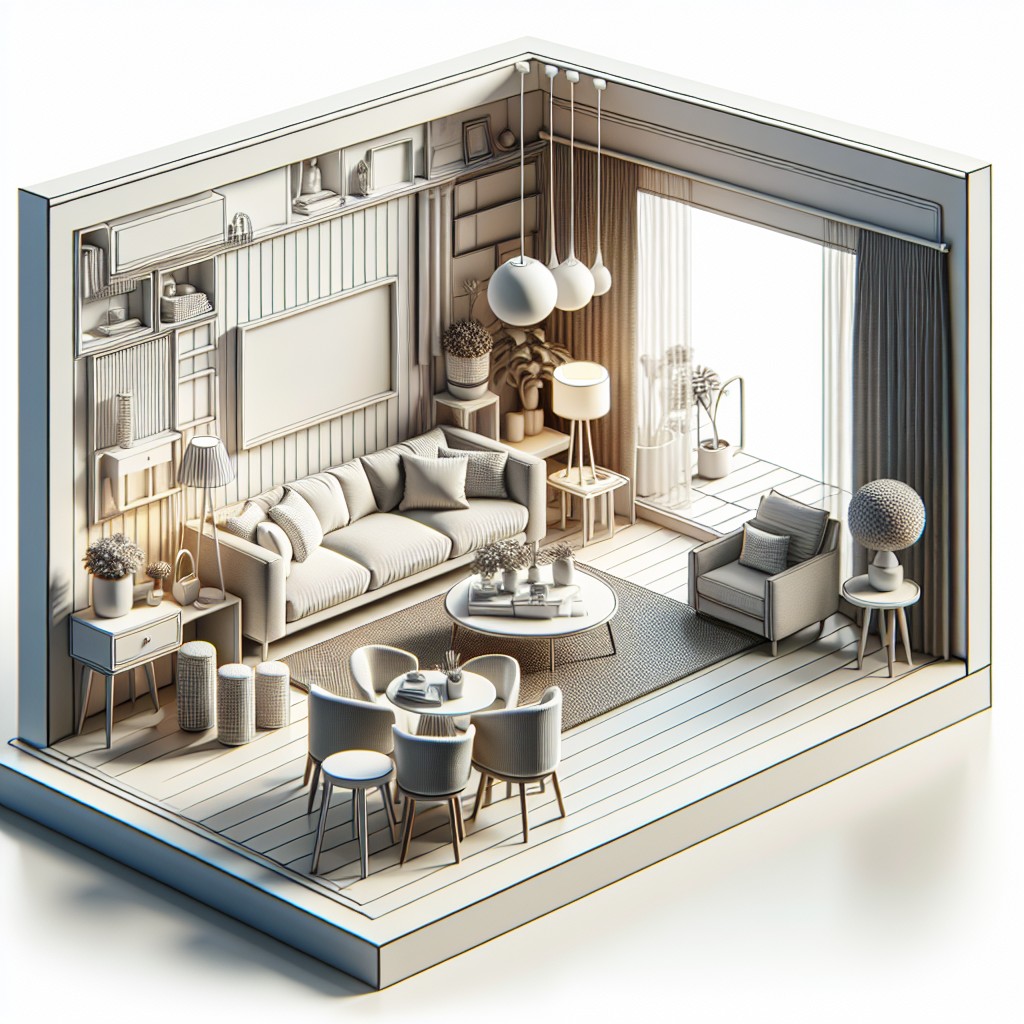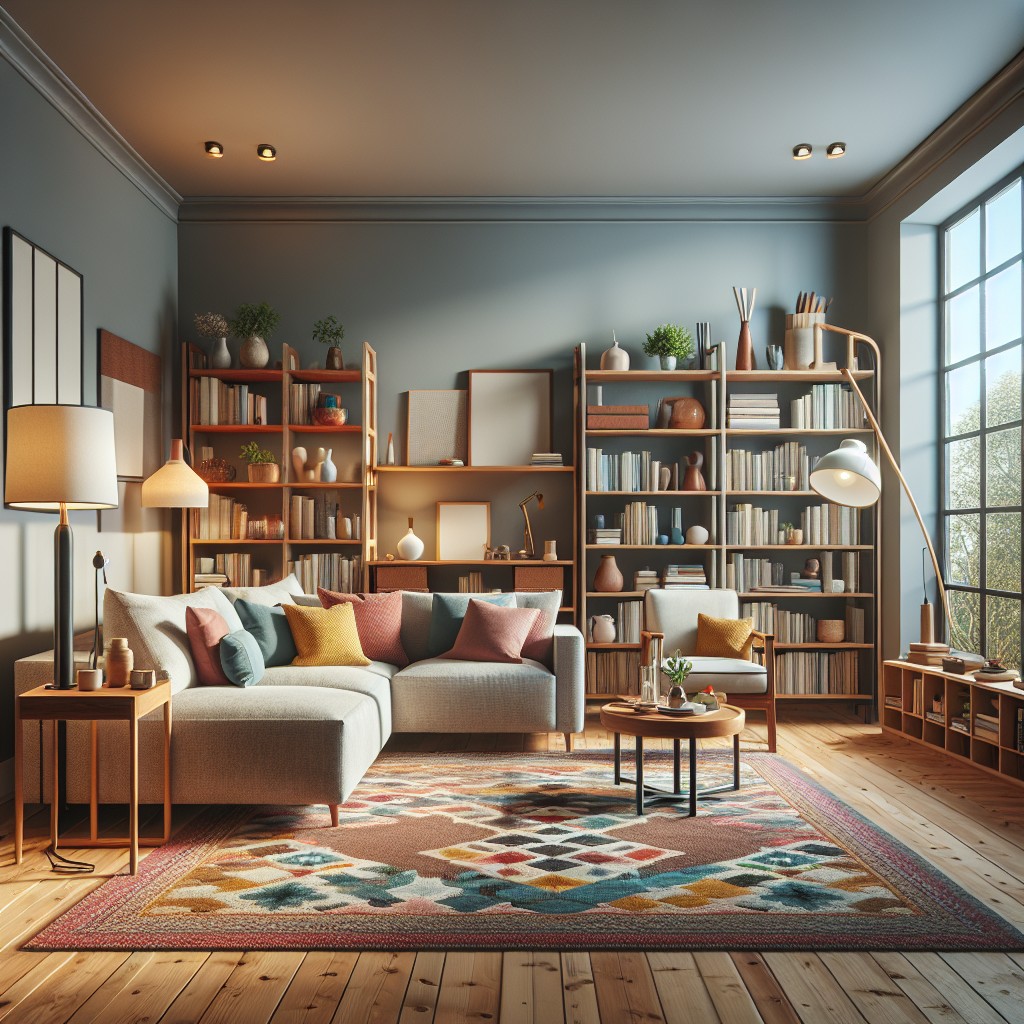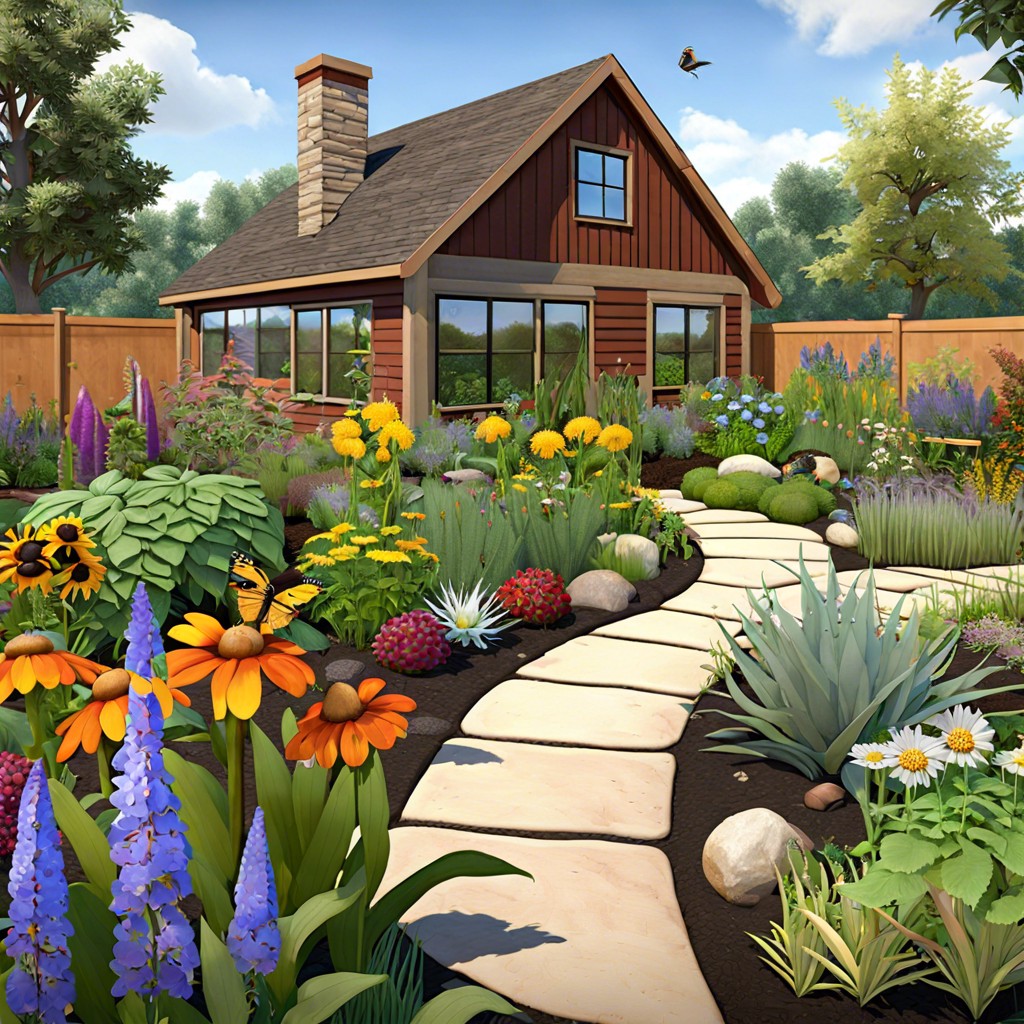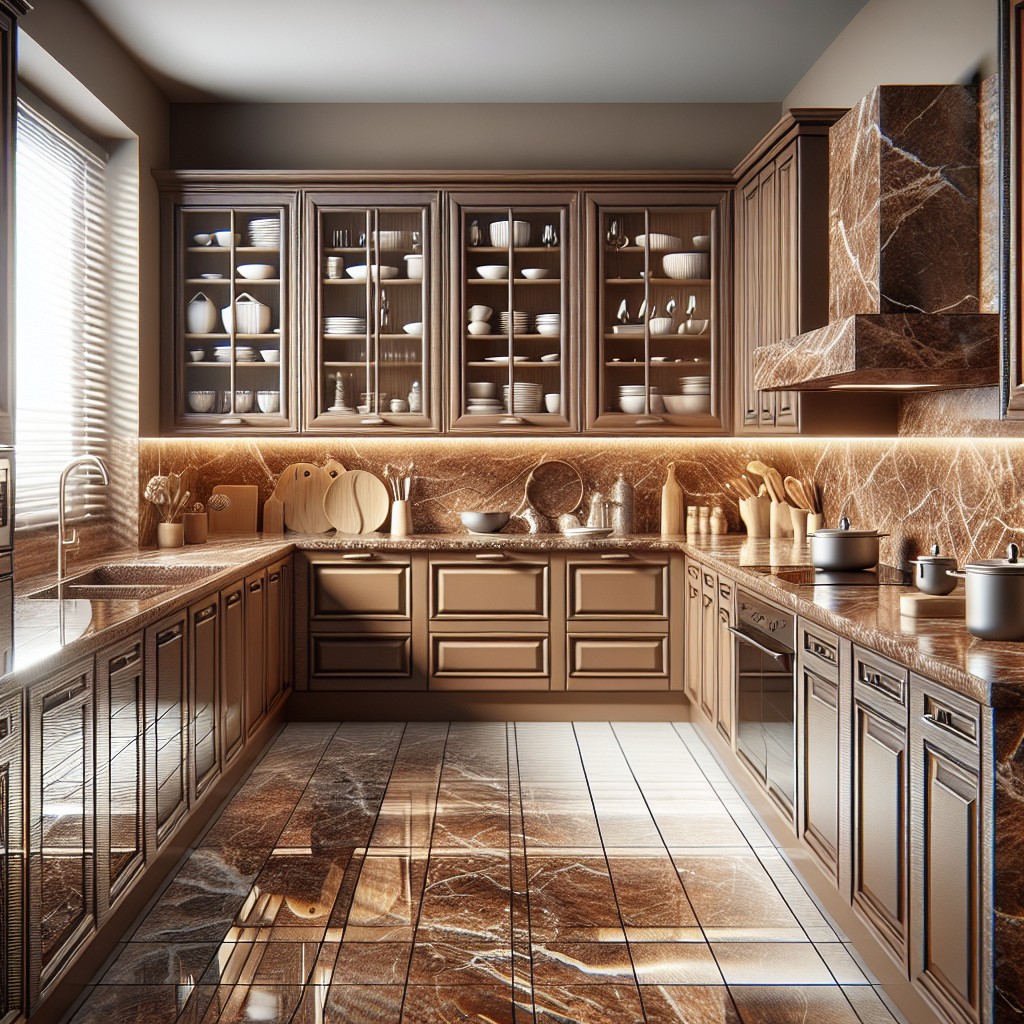Last updated on
Diving into square footage can be a tad perplexing because appreciating just how big 250 square feet is may depend on perspectives you’ve never considered before.
Key takeaways:
- Standing in an end zone of a football field.
- Ten king-sized beds or four parking spaces.
- Larger than a small bedroom, suitable for a spacious bedroom or home office.
- Can fit a comfortable living room setup.
- Effective space planning and furniture scale are crucial for utilization.
What's Inside
Visualizing 250 Square Feet

Imagine standing in the end zone of an American football field. Now, picture a space on the field that is 10 feet by 25 feet. This gives you a 250 square feet area. For those familiar with basketball, that’s slightly larger than the painted area known as the key.
Visualizing everyday objects can also give a sense of scale. Picture ten standard king-sized beds side by side – this is approximately the space we’re discussing. Alternatively, think about parking spaces in a lot; typically, one space is around 150 to 200 square feet, so envisage a space slightly larger than one and a half parking spots. This helps form a mental image of the size of 250 square feet, providing a tangible understanding of spatial dimensions.
Common Items for Scale

Understanding the scale of 250 square feet is easier when comparing it to tangible objects. Picture a standard two-car garage, which typically measures around 400 to 600 square feet—you’re looking at slightly less than half of that space. For those familiar with King-size beds, two of these would take up about 85 square feet, leaving much less walking room in a 250-square-foot area. If you’re into parking, this size is also analogous to a little more than four standard parking spaces. Imagine an average bedroom filled with no furniture; that’s close to the square footage we’re discussing. These comparisons offer a practical frame of reference for visualizing 250 square feet in everyday life.
Room Size Comparison
When picturing 250 square feet, consider that a typical small bedroom might measure around 100 to 150 square feet, making a 250-square-foot space considerably larger. This size could accommodate a more spacious bedroom setup with a queen-sized bed or act as a generously sized home office.
If you’re thinking about a living area, 250 square feet is tight; however, it’s enough for a cozy living room with a sofa, a small coffee table, and a TV stand.
Keep in mind that while this may not allow for a full dining setup, pairing down to essentials or opting for multifunctional furniture can make the area feel open and comfortable.
Bedroom Sizes
When assessing bedroom sizes, 250 square feet is considered spacious. This scale provides ample room for a king-sized bed, bedside tables, and additional furniture like a dresser or a small seating area without feeling cramped. For perspective, the average size of a college dorm room is about 130 square feet, making a 250-square-foot bedroom nearly double that size.
In a room this large, clever design can create a multi-functional space. A designated sleeping area can be complemented with a work or relaxation zone. It’s possible to fit a desk, bookshelves, or even a cozy chair by the window for a reading nook, further enhancing the functionality of the space.
For those sharing a bedroom, the size allows for personal areas within the same room. With smart storage solutions, even shared spaces can feel organized and spacious. Keep in mind that with more square footage, there’s the flexibility to play with furniture arrangement, ensuring that the bedroom can adapt to evolving tastes and needs over time.
Living Room
Considering the dimensions of a typical living room, a space measuring 250 square feet serves as a comfortable area for seating, entertainment, and movement. It accommodates a medium-sized sofa, a coffee table, and an entertainment unit with ease.
You might even find room for a bookshelf or a cozy reading nook depending on your layout preferences.
In terms of group gatherings, this size allows for a small to medium group to socialize without feeling cramped.
For an enhanced sense of space, strategic placement of mirrors or selecting a light color palette could be beneficial.
Keep in mind that multi-functional furniture, like a sofa bed or an ottoman with storage, can help maintain a balance between aesthetics and function in this square footage.
Space Planning
Effective space planning transforms a 250-square-foot area into a functional and aesthetically pleasing environment. Here are some key points to consider:
1. Furniture Scale: Opt for furniture pieces that are proportional to the space. Oversized items can overwhelm the room, while appropriately sized pieces can make it feel more open.
2. Dual-Purpose Items: Choose furniture that can serve multiple purposes, such as a sofa bed or a coffee table with storage. This maximizes functionality without sacrificing valuable square footage.
3. Vertical Storage: Leverage wall space for storage with shelves or wall-mounted units, drawing the eye upward and keeping the floor clear.
4. Flow of Movement: Maintain clear pathways for easy movement around the room. This involves strategic placement of furniture to avoid a cramped feeling.
5. Light and Color: Use light colors and mirrors to make the space feel larger and brighter. Good lighting opens up the area, making it seem more expansive.
6. Customization: Consider custom-built solutions tailored to your specific needs, like built-in desks or shelves, to maximize every inch of available space.
Implementing these strategies can drastically improve both the functionality and comfort of a modest 250-square-foot area.
Furniture Layout
When laying out furniture in a 250-square-foot space, a strategic approach is key. Opt for multi-functional pieces such as a sofa bed or a dining table that doubles as a work desk. Consider scale; select furniture that’s proportional to the room to avoid a cramped feeling.
Use vertical space with tall shelving units to maximize storage without sacrificing floor real estate. Light-colored and slim-profile furnishings can make the area appear larger, while wall-mounted TVs and fold-away furniture can save space. Transparent tables or those with slender legs tend to occupy less visual space, contributing to a more open feel.
Simplify by limiting the number of large items and choose necessity over luxury to maintain a breathable, uncluttered environment.
Real-world Examples
Imagine standing in a standard parking space in a shopping mall; it typically measures around 180 to 200 square feet, so 250 square feet would be just a bit larger than that single spot.
Now, consider a small boutique or a studio apartment; these spaces often come in roughly at our square footage of interest.
Similarly, if you’ve ever rented a storage unit, the mid-sized units you see might be around this size – giving you a real-world container to visualize personal belongings fitting into a 250-square-foot area.
These examples relate directly to everyday experiences, making it easier to grasp how much space 250 square feet truly is.
Parking Spaces
To get a real-world grasp on 250 square feet, consider the dimensions of a standard parking space. Typically, one parking spot measures about 180 square feet, a bit smaller than our area of interest. Now, picture adding roughly half of another parking space to the first. This mental image approximates the size of 250 square feet.
If you’re thinking in terms of parking, you might imagine a spot and a half that could comfortably accommodate a couple of compact cars or one large vehicle with some room to spare. This visual can help when considering the scale of the area you’re trying to conceptualize, whether you’re mapping out a new layout, considering the size of a potential rental storage unit, or simply gaining a better spatial understanding.
Storage Units
When considering storage units, a 250 square foot space is one of the larger options available and can typically house the contents of a large home. Here are a few points to help gauge what such a unit can hold:
- Furnishings: Suitable for multiple furniture sets, including dining room, several bedrooms, and living room pieces.
- Appliances: Room for major household appliances like washers, dryers, and refrigerators.
- Boxes: Provides stacking space for numerous boxes, making it a go-to for moving or long-term storage needs.
- Organization: With the ample area, shelving units can be used for organized, accessible storage without cramping the space.
- Accessibility: A space of this size often comes with the ability to drive up for easy loading and unloading.
Keep in mind that while the volume is generous, the actual capacity will depend on the items being stored and how efficiently they are arranged within the unit.
Comparative Measurements
Understanding comparative measurements helps in grasping the size of 250 square feet. Globally, many countries use the metric system, measuring in square meters. A square meter is approximately 10.76 square feet. Translating 250 square feet to the metric system, it comes to about 23.23 square meters.
Another practical comparison involves the average size of a car parking space, which is about 180 square feet. Imagine a little more than one and a third of these parking spaces, and you have your 250 square feet.
For a vivid internal home perspective, think kitchen—a large one might be roughly the size of 250 square feet. Similarly, if you’ve ever visited a studio apartment, some range around this size, giving a familiar reference point of living space.
Quick Conversion Tip: To convert square feet to square meters, multiply by 0.0929. For meters to feet, the figure is 10.76.
Square Meters to Square Feet
Understanding the metric system is key when comparing square footage internationally, as most countries use square meters. One square meter is approximately 10.764 square feet.
Therefore, to convert 250 square feet into square meters, you would divide the area by 10.764, resulting in about 23.226 square meters.
This simple calculation can help you visualize the space in a metric context and communicate effectively with an international audience or when referencing blueprints and materials from countries using the metric system.
Keep a conversion calculator handy or memorize the figure 10.764 to swiftly switch between units.
Conversion and Calculation
Understanding the dimensions of 250 square feet can seem complex without the right tools. Yet, with simple math, we can unveil numerous spatial possibilities. To ascertain what a 250-square-foot space feels like, consider these points:
1. Square Footage Formula: Multiply the length and width of a space to get the square footage. A room measuring 25 feet long by 10 feet wide matches our target area.
2. Different Shapes, Same Size: Not all 250-square-foot areas are rectangles. This area can be a square of roughly 15.8 feet on each side, or even a long, narrow space of 5 feet by 50 feet.
3. Metric Conversion: If metrics are more your style, a quick conversion reveals that 250 square feet is approximately 23.23 square meters (since 1 square foot equals about 0.0929 square meters).
4. Versatile Arrangements: Recognize that various length and width combinations can yield the same total area. For example, a space could be 20 feet by 12.5 feet or 16 feet by 15.625 feet, each presenting unique layout potentials.
By grasping these calculation concepts, you’ll better understand how to visualize and work with spaces of this size.
Length and Width Configurations
Understanding how length and width combine to define the size of a space brings clarity to imagining 250 square feet. Imagine several rectangular configurations:
1. A perfect square space would measure 15.8 feet on each side.
2. A slightly elongated rectangle could be 10 feet by 25 feet.
3. For narrower options, consider a space 5 feet wide stretching to 50 feet long.
These dimensions offer an adaptable framework for envisioning varied layouts within the same square footage. Keep in mind, the feel of a 250 square foot space can be significantly influenced by height, with vaulted ceilings making a room feel larger, despite the floor measurements.
Design Considerations for Small Spaces
When designing a small space, every inch counts. To maximize the utility and aesthetics of a 250 square foot area, consider multifunctional furniture, like a sofa bed or ottoman with storage. Opt for light colors to make the space feel airier, and use mirrors strategically to reflect light and create the illusion of more room. Vertical storage solutions and floating shelves can free up floor space while maintaining organization. Avoid clutter by keeping decor minimal and choose pieces that provide both function and style. Lastly, invest in quality lighting to enhance the overall atmosphere and make the space inviting.
FAQ
How big is a room thats 250 sq ft?
A room that is 250 square feet could potentially measure 25 feet by 10 feet in dimensions.
How many square feet does a 12×12 room have?
A 12×12 room has 144 square feet.
What is 200 sq feet look like?
A 200 square foot area is approximately the same size as a standard one-car garage, providing enough space for an average car with a little extra room to spare.
How big is a room that is 300 square feet?
A 300 square foot room approximates to an area of 17.3 feet by 17.3 feet.
What is the typical layout for a 250 square foot apartment?
A typical 250 square foot apartment layout commonly consists of one multipurpose room that serves as a living, kitchen and bedroom area, with a separate bathroom.
How can I efficiently utilize the space in a 250 square feet room?
To efficiently utilize space in a 250 square feet room, focus on using multifunctional furniture, implementing smart storage options, effectively using vertical space, and manipulating light to make the room appear larger.
Can a 250 square feet space accommodate a home office?
Yes, a 250 square feet space can effectively accommodate a thoughtfully designed home office.




